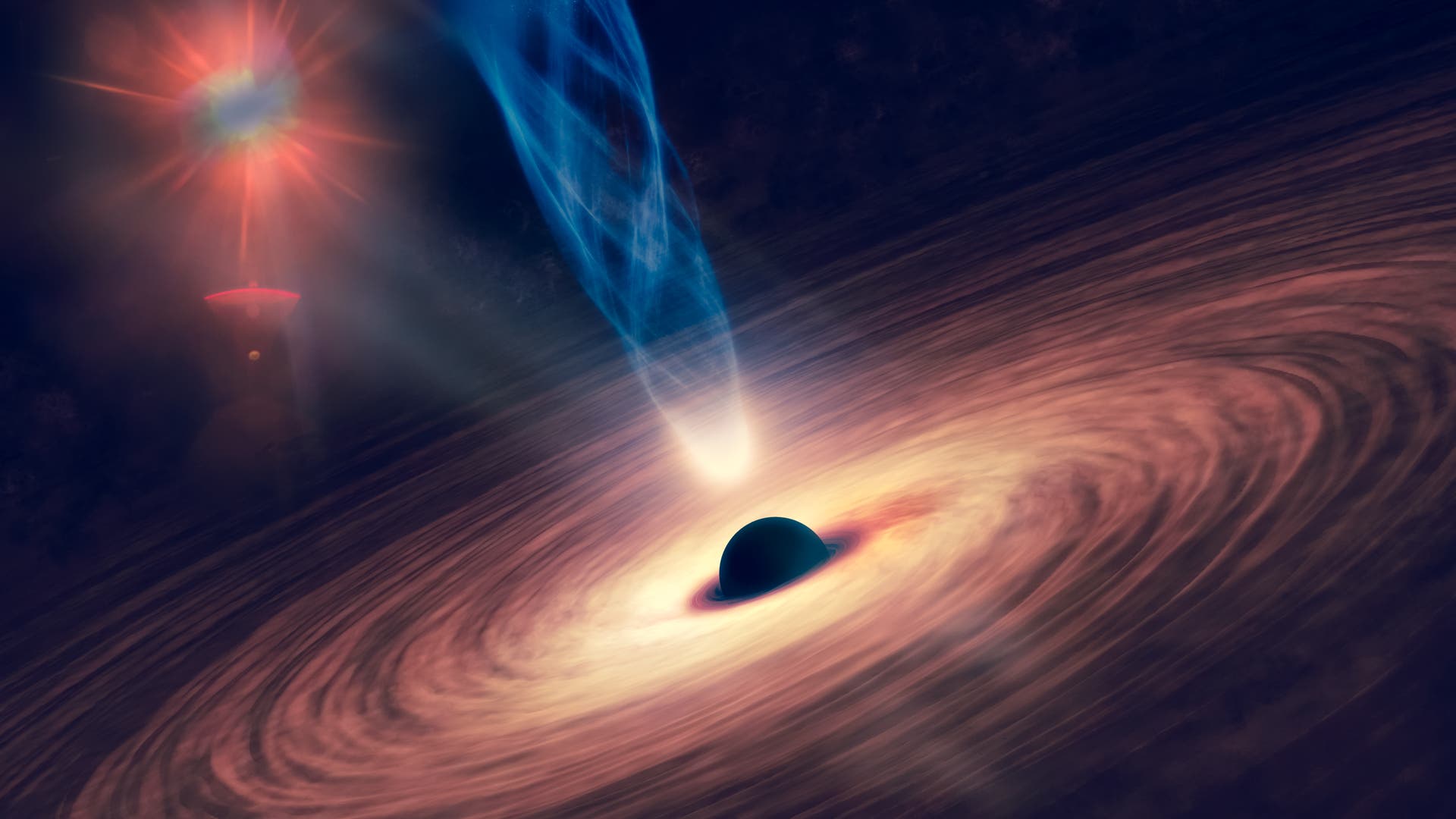From finite curves to infinity
But how do you even judge whether infinite spacetime curvature exists beyond the event horizon? In fact, Hawking and Penrose’s argument was a mathematical one, dealing with the properties of curves. The idea is as follows: Suppose a marble moves through empty space-time. It will go on forever and ever and will never stop.
Even in non-empty spacetime, one can check how long the ball follows its more complex normal path. Some marbles fly indefinitely here too. But in theory, the ball could have a limited “life” and at some point suddenly disappear from the universe. This is only possible if there is a singularity in space-time. If one can prove that there are finite-life paths inside black holes, as Hawking and Penrose concluded, then galactic objects contain singularities within them. So far, Kerr agrees with them.
But of course Hawking and Penrose did not base their argument on a marble, but rather used abstract mathematical objects. They looked at the curves that corresponded to the path of light rays. If curves had a finite “life,” so the idea goes, then the rays would inevitably end up in a singularity.
While this seems logical, the transition from slow marbles to light rays traveling at the speed of light presents difficulties. According to the theory of relativity, the faster an object moves, the slower time is for it (compared to stationary observers). When there is light, time stops completely. In other words: light never ages. It is therefore not possible to determine the “age” of the light beam. This will always be zero – regardless of whether the light beam ends at a singularity or continues indefinitely.
That’s why Penrose and Hawking came up with another mathematical quantity similar to the age of the curve: the so-called affine length. This seemed obvious, because all objects that move slower than light and have a finite lifetime also have a finite asymptotic length – and vice versa. The good thing is that it can also set uniform lengths for light rays, which can be finite or unlimited.
“This is nothing but a belief.”Roy Kerr, mathematician
Penrose was able to exhibit in 1965That within a closed event horizon, such as that of black holes, there are always light rays of specific lengths. Along with Hawking, he argued that if light rays of finite coherent lengths exist, they must terminate in a singularity. If you combine these two results, it follows that every black hole must contain a singularity.

“Total coffee aficionado. Travel buff. Music ninja. Bacon nerd. Beeraholic.”








More Stories
Coral Seeding: Artificial Insemination Makes Coral More Heat Tolerant
Fear, Anger, and Denial: How People Respond to Climate Change – Research
LKH Graz: Using radiation to combat heart arrhythmias